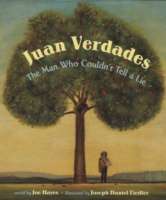
A wealthy rancher is so certain of the honesty of his foreman that he wagers his ranch.

A wealthy rancher is so certain of the honesty of his foreman that he wagers his ranch.
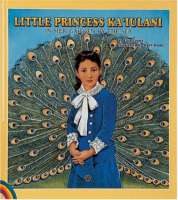
Snuggle up to this story of Hawaii’s special princess, Kaiulani. Follow her adventures as a young girl growing up in Hawaii as part of the royal family. Learn about her special garden by the sea and her friendship with poet, Robert Louis Stevenson. Author Ellie Crowe offers children a rare glimpse of the Hawaiian monarchy, Princess Kaiulani and the customs of the day. The delicate drawings of Mary Koski bring Crowe’s story to life by accurately depicting the architecture and clothing of the time period.
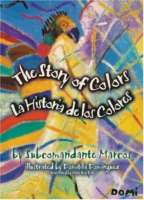
When the NEA -rescinded funding for The Story of Colors, the news hit the cover of the New York Times and made the book an instant bestseller. But far from being subversive, this beautifully illustrated folktale teaches us all about the value of diversity. Old man Antonio tells how a long time ago the world was just black and white and gray. This bored the gods, so they went looking for bright colors and they found them in the most peculiar places!
No one exactly knows who -Subcomandante Marcos is, but since New Year’s Day 1994, when the Zapatistas declared war on the Mexican government, he has become a post-modern revolutionary hero.
Smoke Over Grand Pré provides a glimpse into the lives of people who lived during the period that led up to the Acadian deportation. The eviction of Acadians from Nova Scotia by the English gove ment represents an important chapter in the history of Nova Scotia and of Canada.

Amaroq is a lively Eskimo boy who fives at the top of the world with his best friend, Nutik, the wolf pup. Amaroq was named after a great wolf leader; Nutik is the wolf leader’s grandpup. The boy and the wolf pup are like brothers.One day Amaroq and Nutik want to play football, but their ball has disappeared. What shall they do? Listening to and observing Nutik’s wolf talk, Amaroq follows him outside. The two friends wander out onto the tundra, where there are no trees, no paths, and no landmarks to help them find their way home again. Amaroq is afraid they are lost, but then he remembers what the great wolf leader he was named after would do. By observing nature and following what it says, Amaroq and Nutik are safe again-but not before finding a surprise for both of them!Amaroq and Nutik’s adventure follows the first picture book about them, Nutik, the Wolf Pup, and continues the Arctic saga about these characters originally drawn from Julie’s Wolf Pack, sequel to the Newbery Medal-winning Julie of the Wolves.
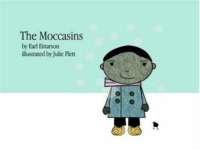
This is an endearing story of a young Aboriginal foster child who is given a special gift by his foster mother. Her gift of warmth and thoughtfulness helps her young foster children by encouraging self-esteem, acceptance and love. Written as a simple story, it speaks of a positive foster experience.

Slash is Jeannette Armstrong’s first novel. Slash poignantly traces the struggles, pain, alienation and accounts of a young Okanagan man’s search for truth and meaning in his life. Slash has been adopted for use in high schools, colleges and universities.
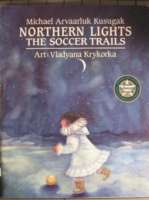
Northern Lights is a beautiful tale that explores the mystical aspects of the northern lights in Inuit culture. Scientists have their own explanations for the phenomenon that occurs when the night sky shimmers with milky white patterns, or displays all the colors of the rainbow. But the Inuit prefer their own explanation: They believe the souls of the dead are engaging in a lively game of soccer, just as they did when they were living. They run all over the sky chasing a walrus head that they use for a soccer ball. This is the story of Kataujaq and the intimate relationship she has with her mother. They do almost everything together; they hug, rub noses and say “Mamaq” which means “You smell so nice.” But a great sickness comes and Kataujaq’s mother is taken south to the white people’s hospital and never comes back. Kataujaq grieves, but is also able to rejoice when she and her grandmother watch the northern lights. This book celebrates family life, intimacy and the glory of nature.